Peter’s Blog, January 25th, 2011
Hi Everyone,
Ever since we posted the Instructional videos from The Fire Within Conference we’ve been getting a number of requests to discuss how to make a home oven perform like one of those wood-fired brick ovens in the video. It’s tempting to say,”No way, can’t be done,” but the fact is that most of us don’t own a brick oven and even those who do still have to cook much of their food in gas or electric home ovens. I’ve been hosting pizza parties at our house for years, well before I joyfully received my Forno Bravo Primavera oven, so I can attest to the fact that it can be done–that is, you can make killer pizzas in a home oven, even one like my weenie electric oven that doesn’t go above 500 degrees Fahrenheit and doesn’t even have convection.
So, here are a few tricks that anyone can use to make your oven perform at a higher level. This will come as no secret, but the key is to maximize what you can get from the oven by using thick pizza (ie baking) stones, not the thin 1/2″ stones that break or crack after a few months. Our friend and world famous pizzaiolo Brian Spangler (of Apizza Scholls in Portland, Oregon), who uses an electric oven at his amazing pizzeria, is famous for saying, “It’s not the source of the heat that matters, it’s about the quality of the BTU’s.” This is true, to a point, but what most home ovens lack is both quality BTU’s and also quality insulation. Home ovens simply do not hold their heat well, certainly not like a brick oven. But baking stones serve as thermal masses, much as bricks do in a wood fired oven, absorbing and then radiating stored heat back into the food. The addition of even one baking stone can make a huge difference, but some of our Pizza Quest Forum writers report the added benefits of using two stones–one to radiate heat from below and one from
above. This turns your home oven into something akin to a brick oven, albeit without the live wood fire. But the quality of your BTU’s will be greatly enhanced and your oven chamber will hold the heat better–keeping it in the oven instead of leaking out the door every time you open it. It will also allow your oven to recover its temperature more quickly when the door is opened.
One other point, for those who have convection options: use the convection–it will enhance the effectiveness of the heat by as much as 50 to 100 degrees! The hotter the oven, the better the pizza; the faster it bakes, the better it will be. BUT, and this is a big but, please be sure to preheat your baking stones for at least one hour so that they will absorb the heat. Otherwise, instead of radiating heat into the pizza (or any food) it will block it while it heats up. It kills me to do this, as I hate to waste energy waiting for the baking stone to heat up, but I assuage my guilt by baking other things, such as oven roasted vegetables, during the ramp-up, and then roast things like a chicken (or, sometimes, bake cookies) during the ramp down phase after the pizzas are finished.
So, as a recap, here are the bullet points: get your oven as hot as it will go; use one or, better, two thick baking stones (like the ones you can find at the Forno Bravo E-Store); preheat for at least one hour to allow the stones to absorb the heat; use the convection if you have it; and utilize the long ramp-up preheating phases, and the ramp-down residual heat to cook other things. I’m sure many of you have other tricks up your sleeve and I’d love to see a long thread start here in the Comments section, as well as to remind you to check out the already existing threads at the Pizza Quest Forum hosted on the Forno Bravo website (you can get there by clicking the Forum button above). I’m hoping that our collective experience in this area will add new techniques that will be useful for all of us.
On a separate note, I just want to remind those of you have written to me asking where and when I will be travel teaching that, while I don’t have anything currently scheduled, I will post my schedule both here, in this blog, and also at my Baking Blog (see button in the right hand column of the Home Page). I won’t be going out again, though, until I turn in the manuscript for my upcoming book in July (I’ve written about that project in past posts). Anyway, when I do get back out on the road, you will be the first to know.
Till next week, May Your Pizzas All Be Perfect!
Peter
Recent Articles by Peter Reinhart
- Howard Brownstein on Turnaround and Crisis Management
- Randy Clemens and Forest Farming in Uruguay — The Back to The Earth Movement is Back!
- It’s not too late to chase your dreams: “Pizza From the Heart” A New Book by Paulie and Mary Ann Gee
- Kyle Ahlgren on the Artisan Baking Center Online Classes (and a special offer)
- Multi-James Beard Nominee Cathy Whims of Portland’s Nostrana and her Brand New Book
- Pizza Quest: KID, Manhattan’s New Slice Cafe, with Chefs Ian Coogan and Max Blackman-Gentile
Comments
Add Comment
You must be logged in to post a comment.




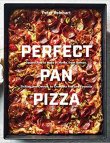
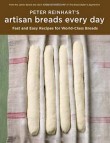
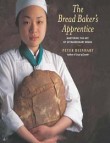
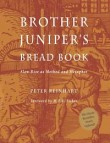
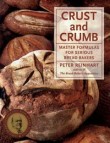
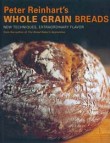
Good post Peter. I agree in principle with Chef Spangler’s comment about the quality of the BTU’s. Those of us with home ovens that make lots of pies are always searching for a better method. The use of stones or tiles is very useful.
I would offer this up though, given an equal number of quality btu’s irregardless of oven type, and exact pizza ingredients, IMHO, a wood fired oven will produce the finest tasting pizza, hands down, no contest.
There’s a bunch of tricks available for those willing to play around. When not using a stone I have an 18″ aluminum pan which heats quickly-depending on dough type I’ll cook at temps ranging between 425-500 degrees. When the bottom browns up nicely on comes the broiler for 1-3 minutes. This ensures that the top gets those nice brown bubbles and maybe a slight char.
Great tip, Glenn–thanks!!
Hey Peter, thanks for info about using 2 stones for better recovery. I have been looking for a way to do do this and was thinking about upgrading to Hearth Oven Insert. I found some on Ebay and was wondering if using the 2 stone approach will give me better results?